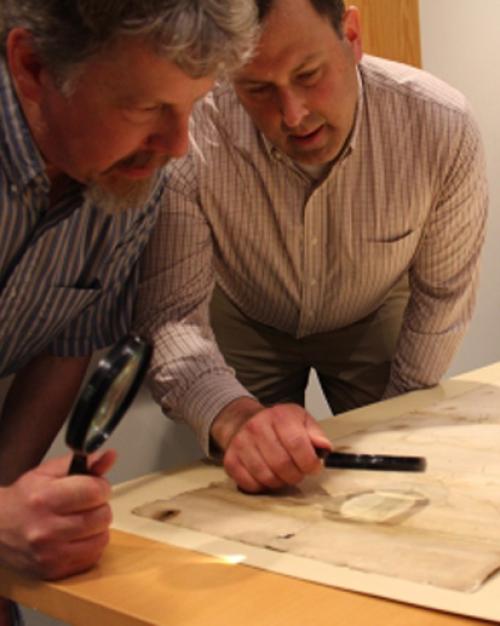A newly acquired 18th-century map of what is now New York state, showing Seneca and Cayuga villages and native footpaths in addition to natural features, offers insights into colonial life that will enhance learning and research at Cornell.
The manuscript, drawn by prominent Albany-based mapmaker and surveyor John Rutse Bleecker, is now part of the American history and culture collections in Cornell University Library’s Division of Rare and Manuscript Collections. It consists of three maps: a finished map of Hudson County, and sketched maps of Schoharie Creek and Seneca and Cayuga territory.
The Seneca-Cayuga map depicts Cayuga and Seneca lakes as well as six small triangles representing indigenous villages. Five of these villages are named, and all are connected by a network of dotted lines indicating footpaths.
“It’s one of the most detailed early European reconnaissance of what we now call the Finger Lakes, and what’s striking about that from a colonial/historical perspective is how late that is,” said Jon Parmenter, associate professor of history.
The map was likely created between 1760 and 1770. By then, the Finger Lakes region was well known to European colonists, but they had limited access for detailed surveying.
“The nature of contact here was really intermittent and in many ways shaped and controlled by native people,” Parmenter said.
Parmenter and Kurt Jordan, associate professor of anthropology and American Indian and Indigenous studies, both of whom study the native people of this region, visited the map in the Division of Rare and Manuscript Collections last week, excitedly studying it with magnifying glasses and comparing it with other published maps of the area.
Parmenter and Jordan both thanked the library and rare books and manuscripts curator Katherine Reagan for what they called an “important and exciting acquisition.”
“It’s important to have the exact locations of settlements, and dates when they can be located, as well as all of these really interesting details,” Jordan said.
For example, a spot on Cayuga Lake labeled “Tarry” on the map was probably a spot where people waited for canoes to come and ferry them across to the other shore. A spot near what is now Montezuma, N.Y. is labeled, “The resort of gees and ducks of all sorts all the year.”
“There’s a lot of exciting detail here,” Parmenter said.
Melanie Lefkowitz is staff writer, editor and social media coordinator for Cornell University Library.
This story also appeared in the Cornell Chronicle.





